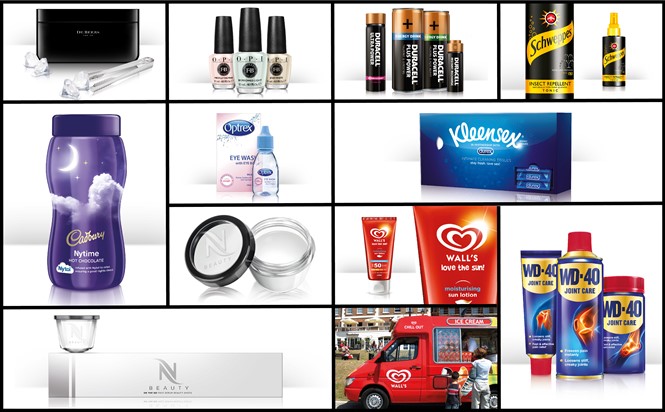Opinion: What makes brand extensions succeed?

Brand extension has evolved dramatically in the past twenty years or so. Back then, there was a fairly gentle expansion of FMCG goods into adjacent product categories – Mars ice cream bars made huge news in 1988. Now extension is an integral, often outrageous, part of the brandscape.
Carlsberg’s Beer Beauty men’s personal care range perfectly encapsulates the extent to which the trend has taken hold, along with a slew of other recent brand extensions such as Dolce & Gabbana’s artisanal SMEG fridges, KFC chicken-flavoured nail varnish, and Burger King saunas. Is there a meaningful business case behind such extensions? Are they just attention-grabbers to keep consumers engaged with brands in an ever faster, noisier environment?
An initial sense of the sheer ubiquity of brand extension is more than born out by the facts: Nielsen finds that extensions are around three to four times more common than ‘new manufacturer’ and ‘new brand’ products combined. With half of all new products failing, going down the extension route makes sense. But it’s not an easy path: failures similarly litter the shelves of discount stores and can be the nightmares of marketers. Cheetos lip balm, anyone?
Picking apart the art of brand extension doesn’t lead to a single magic stretch formula. But there may be a robust categorisation of the phenomenon. In DewGibbons + Partners' guide to 21st century brand extension launched earlier this year, we found three overarching categories: migration, marriage and metamorphosis.
Migration builds on legendary marketing professor Ed Tauber’s 1979 extension model by adding celebrity extension and channel hopping. It’s about knowing what business you’re in and what your brand is known for. Being a ‘me-too’ product isn’t enough – migration must add meaningful value to the customer. For the business, migration has to offer long-term growth prospects, and the chosen route shouldn’t cut off more lucrative directions.
Marriage is extension through multi-brand collaboration, pooling two or more brands’ resources to achieve it. Whether a marriage of convenience (Bold 2in1 with Lenor), something more romantic (Rihanna and Puma), or a true match made in heaven (Sephora + Pantone Universe), Marriage offers myriad extension possibilities – and pitfalls.
Finally, metamorphosis is the unicorn of brand extension: transforming a brand from a product proposition to a true personality that’s totally free from category constraints. As consumer attention fragments across ever more channels, brands have to be personable, playful, human and take risks. But as metamorphosis is so hard to achieve, limited editions like Carlsberg’s Beer Beauty often come in to play instead.
Having reviewed the good, bad, and very ugly, I put DewGibbons to the test and asked them to create 10 products covering all three extension areas. Some of my favourites are Nytol and Cadbury's hot chocolate Nytime sleep aid drink, Kleensex that brings together condoms and intimate tissues in one handy pack, and WD40 Joint Care for the ultimate in joint lubrication. Absolutely fun ideas, but they’re based on solid strategy and a belief that traditional categories can and should be blurred for consumer benefit.
Real life extensions are sometimes stranger than our made up fictional ones – Cheetos and Burger King are both at it again with Mac n’ Cheetos, and BMW just brought out xDrive Baby Boots. More thoughtful are Tiptree Jam’s new flavoured gin with Hayman Distillers, Rude Health channel hops into healthy cafés, and Marie Claire enters beauty retailing with Fabled, in conjuction with Ocado.
Brand extension can be a serious opportunity in an increasingly competitive and crowded marketplace. But it takes just as much strategic consideration – if not more – than that needed for a new brand. For every headline grabbed with an outlandish extension, the long-term equity of the parent brand(s) can be eroded. The trick is to know just how far to stretch the bounds of credibility before it breaks entirely.
Nick Vaus is the creative director at DewGibbons + Partners.












